
Mayerling is a small village in Lower Austria belonging to the municipality of Alland in the district of Baden. It is situated on the Schwechat river, in the Wienerwald, 24 kilometres (15 mi) southwest of Vienna. From 1550, it was in the possession of the abbey of Heiligenkreuz.

The Cocoanut Grove fire was a nightclub fire which took place in Boston, Massachusetts, on November 28, 1942, and resulted in the deaths of 492 people. It is the deadliest nightclub fire in history and the second-deadliest single-building fire. The Cocoanut Grove was one of Boston's most popular nightspots, attracting many celebrity visitors. It was owned by Barnet "Barney" Welansky, who was closely connected to the Mafia and to Mayor Maurice J. Tobin. Fire regulations had been flouted: some exit doors had been locked to prevent unauthorized entry, and the elaborate palm tree décor contained flammable materials. The air-conditioning used flammable gas because of the wartime shortage of freon.

Fire safety is the set of practices intended to reduce destruction caused by fire. Fire safety measures include those that are intended to prevent the ignition of an uncontrolled fire and those that are used to limit the spread and impact of a fire.
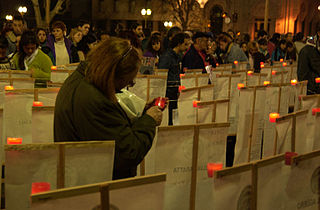
A fire broke out in the crowded República Cromañón nightclub in Buenos Aires, Argentina on 30 December 2004, killing 194 people and leaving at least 1,492 injured. The direct cause was the indoor pyrotechnics igniting the ceiling. It was a fireworks-related fire and a nightclub fire.

The Burgtheater, originally known as K.K. Theater an der Burg, then until 1918 as the K.K. Hofburgtheater, is the national theater of Austria in Vienna. It is the most important German-language theater and one of the most important theatres in the world. The Burgtheater was opened in 1741 and has become known as "die Burg" by the Viennese population; its theater company has created a traditional style and speech typical of Burgtheater performances.
Firefighting jargon includes a diverse lexicon of both common and idiosyncratic terms. One problem that exists in trying to create a list such as this is that much of the terminology used by a particular department is specifically defined in their particular standing operating procedures, such that two departments may have completely different terms for the same thing. For example, depending on whom one asks, a safety team may be referred to as a standby, a RIT or RIG or RIC, or a FAST. Furthermore, a department may change a definition within its SOP, such that one year it may be RIT, and the next RIG or RIC.

A diving chamber is a vessel for human occupation, which may have an entrance that can be sealed to hold an internal pressure significantly higher than ambient pressure, a pressurised gas system to control the internal pressure, and a supply of breathing gas for the occupants.
The Texas Eastern Transmission Corporation Natural Gas Pipeline Explosion and Fire occurred in Edison, New Jersey, on March 23, 1994, where a 36-inch (910 mm) diameter natural gas pipeline broke and exploded into flames next to the Durham Woods apartment complex along New Durham Road at its junction with Interstate 287. The cause of this breakage was given by the NTSB as mechanical damage caused by a backhoe that gauged out 1/4” of steel off the pipe. This was the result of an insurance situation where the owner of a personal vehicle buried their truck to receive insurance monies. This was done on a property adjacent to the complex. The resulting fire destroyed or severely damaged 14 of the apartment buildings. Over 1,500 apartment residents were evacuated, 125 resident apartments, 9 complete buildings, were destroyed and their occupants were left homeless. Miraculously, no one died as a direct result of the explosion.

The Mayerling incident is the series of events surrounding the apparent murder–suicide pact of Rudolf, Crown Prince of Austria, and his lover, baroness Mary Vetsera. They were found dead on 30 January 1889 in an imperial hunting lodge in Mayerling. Rudolf, who was married to Princess Stéphanie of Belgium, was the only son of Emperor Franz Joseph and Empress Elisabeth, and was heir apparent to the throne of Austria-Hungary.

Vancouver Fire and Rescue Services (VFRS) was founded in 1886 and today serves the city of Vancouver, British Columbia, providing fire, medical first response, rescue and extrication services. In 2017, VFRS responded to 67,000 emergency calls.
The Los Alfaques disaster was a road tanker explosion that occurred near a holiday campsite on Tuesday July 11, 1978 in Alcanar, Spain. The exploding truck, which was carrying 23 tons of highly flammable liquefied propylene, killed 215 people and severely burned 200 more. Several individuals from the company that owned the vehicle were prosecuted for criminal negligence. The accident resulted in new legislation in Spain, restricting the transit of vehicles carrying dangerous cargo through populated areas to night time only.

Theater am Kärntnertor or Kärntnertortheater was a prestigious theatre in Vienna during the eighteenth and nineteenth centuries. Its official title was Kaiserliches und Königliches Hoftheater zu Wien.
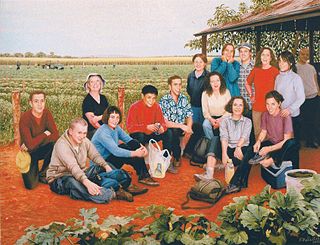
The Childers Palace Backpackers Hostel fire on 23 June 2000 killed 15 backpackers – nine women and six men – at the former Palace Hotel in the town of Childers, Queensland, Australia, which had been converted into a backpacker hostel. Robert Paul Long was arrested for lighting the fire and charged with two counts of murder and one count of arson. He was later sentenced to life imprisonment.

The Ringtheater was a popular theater in Vienna, Austria. In 1881, it was destroyed in the Ringtheater fire that killed 384 people. The site now houses the federal headquarters of police for Vienna.

The Church of the Society fire is the largest fire ever to have affected the city of Santiago, Chile. Between 2,000 and 3,000 people died, probably the largest number of people to die in an accidental fire in any one building in the world, and even one of the worst building fires of a religious building.
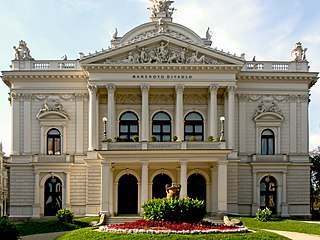
Mahen Theatre is a Czech theatre situated in the city of Brno. Mahen Theatre, built as German Deutsches Stadttheater in 1882, was one of the first public buildings in the world lit entirely by electric light. It was built in a combination of Neo-renaissance, Neo-baroque and Neoclassical architectural styles.

On June 29, 1995, the Sampoong Department Store in Seoul, South Korea, collapsed due to a structural failure. The collapse killed 502 people and injured 937, making it the largest peacetime disaster in South Korean history. It was the deadliest non-deliberate modern building collapse until the 2013 Rana Plaza factory collapse in Bangladesh.
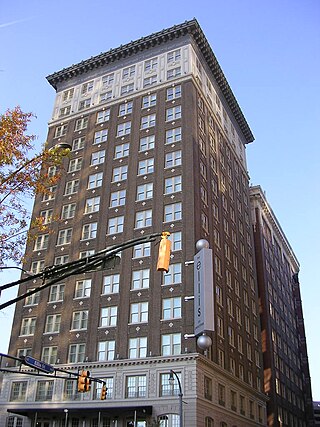
The Winecoff Hotel fire, of December 7, 1946, was the deadliest hotel fire in American history, killing 119 hotel occupants, including the hotel's original owners. Located at 176 Peachtree Street in Atlanta, Georgia, the Winecoff Hotel was advertised as "absolutely fireproof". While the hotel's steel structure was indeed protected against the effects of fire, its interior finishes were combustible and the building's exit arrangements consisted of a single stairway serving all fifteen floors. All of the hotel's occupants above the fire's origin on the third floor were trapped, and the fire's survivors either were rescued from upper-story windows or jumped into nets held by firemen.
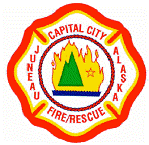
Capital City Fire/Rescue (CCFR) provides fire suppression and emergency medical services to the city of Juneau, Alaska, United States.


















